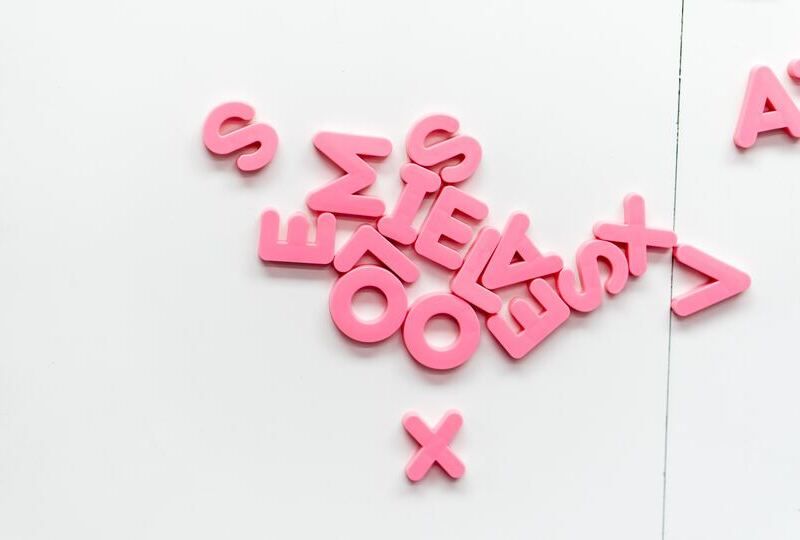Ultimate Guide to Gender and Number Agreement in Spanish

Where Do Gendered Nouns Come From? In Spanish, almost everything is gendered. Nouns in Spanish are all masculine or feminine. This is common not only in Spanish, but in all Romance Languages and dates back to Latin. In Latin, there are three genders; masculine, feminine, and neuter which evolved over time in each of the Romance Languages. English does not use this gendered system, so this may present a challenge for someone who is learning Spanish and speaks English as their first language. When speaking Spanish, it is important to remember that the gender of a noun affects the adjectives and determiners found around it, as well as pronouns that replace it. Adjectives and determiners also have to agree in number with the nouns they are paired to in Spanish. While difficult, with practice anyone can master gender and number agreement.

How to Determine A Noun’s Gender in Spanish
Luckily, there are some patterns we can use to determine if a noun is masculine or feminine. These patterns do not work every time, so the best way to know if a word is masculine or feminine is to memorize it. That being said, we can use these patterns most of the time.
1. Words that end in -o are masculine
Most words that end in -o are masculine, though there are some exceptions. Some examples of masculine words that end in -o are el chico (the boy) or el auto (the car).
2. Words that end in consonants other than -d or -z are masculine
Most words that end in consonants other than -d and -z are masculine. Some examples are el tren (the train) and el conductor (the driver).
3. Words that end in -e are masculine
Words that end in -e can be masculine or feminine, though it is very common that these words are masculine. Some examples are el estante (the shelf) and el maquillaje (the make-up).
4. Words that end in -ma are masculine
While you may think that ending in -a makes a word feminine, if it ends in -ma, it is often masculine. Some examples are el problema (the problem) and el tema (the theme).
5. Words that end in -a are feminine
Words that end in -a are almost always feminine. Some examples are la chica (the girl) and la taza (the cup).
6. Words that end in -ción are feminine
Words that end in -ción are always feminine and the equivalent of the -tion ending in English. For example, la información (information) and la comunicación (communication) are both feminine words.

How to Determine Quantity in Spanish
Nouns in Spanish can be plural or singular, like in English. To form the plural of a noun, simply add -s to the end of a noun that ends in a vowel. If a noun ends in a consonant, -es should be added. If a noun ends in -z, it should change to a c and -es should be added. Words with accents in the singular will lose their accents in the plural. Here are some examples of the words we saw previously in their singular and plural forms.
| Singular | Plural |
|---|---|
| El chico | Los chicos |
| El auto | Los autos |
| El tren | Los trenes |
| El conductor | Los conductores |
| El estante | Los estantes |
| El problema | Los problemas |
| El tema | Los temas |
| La chica | Las chicas |
| La taza | Las tazas |
| La información | Las informaciones |

Definite and Indefinite Articles in Spanish
Look at the chart above. Did you notice that the first word changed? That’s because determiners have to match the nouns they are paired with. This means that there are articles for masculine and feminine words, as well as singular and plural words.
In order to decide which article to use, we need to know the difference between definite and indefinite articles. Definite articles indicate specific nouns. In English, we use the as our primary definite article. Indefinite articles indicate general nouns. In English, we use the words a and some as our indefinite articles.
In Spanish, we select either the definite or indefinite article, decide whether to use the masculine or feminine article, and then opt for a singular or plural article. For example, if I wanted to say the boy, I would pick a definite article. The definite articles in Spanish are el, la, los, and las. Boy is masculine, so I can pick between el and los. The boy is also singular, so I have to choose the singular masculine definite article, which is el.
Here is a chart to sort out which articles are which. The first one is for definite articles (the) and the second is for indefinite articles (a, some).
| Singular | Plural | Example | English | |
|---|---|---|---|---|
| Masculine | El | Los | El chico, los chicos | the boy, the boys |
| Feminine | La | Las | La chica, las chicas | the girl, the girls |
| Singular | Plural | Example | English | |
|---|---|---|---|---|
| Masculine | Un | Unos | un chico, unos chicos | a boy, some boys |
| Feminine | Una | Unas | una chica, unas chicas | a girl, some girls |

Adjective Agreement in Spanish
Spanish is one big matching game, and in addition to matching articles, it’s important that any adjectives match the nouns they are describing. For example, let’s write the red apples. We will start by writing apples, manzanas. We will add our article. It is a feminine word, so I can use la, las, una, or unas. Since we are going with the, I will pick from la and las, and because it is a plural phrase, I will go with las. So far, we have las manzanas. The word for red is rojo. We make it feminine by changing the -o at the end to an -a. We make it plural by adding an -s at the end. Our complete phrase is las manzanas rojas.

Practice Gender and Number Agreement in Spanish
Now it’s time to put your knowledge to the test with some practice problems! Try to put the appropriate article in the blank for each noun. Remember that it should match in gender and number.
- _____ Teléfono (a phone)
- _____ Tostadora (a toaster)
- _____ Aceite (the oil)
- _____ Árboles (the trees)
- _____ Perros (some dogs)
- _____ Cafetera (the coffee maker)
- _____ Cama (the bed)
- _____ Pasillos (the hallways)
- _____ Televisor (the TV)
- _____ Aviones (the airplanes)
For the second set, make the adjective ending match the noun.
- _____ Teléfonos antigü___ (the old phones)
- _____ Tostadora nuev___ (the new toaster)
- _____ Aceite delicios___ (a delicious oil)
- _____ Árboles alt___ (some tall trees)
- _____ Perro agresiv___ (the aggressive dog)
- _____ Cafetera italian___ (the Italian coffee maker)
- _____ Cama cómod___ (the comfortable bed)
- _____ Pasillos larg___ (the long hallways)
- _____ Televisor pequeñ___ (a small TV)
- _____ Aviones rápid___ (some fast planes)

How Did You Do With Gender and Number Agreement?
How did you do? Here are the answers to the practice problems.
-
Un Teléfono (a phone)
-
Una Tostadora (a toaster)
-
El Aceite (the oil)
-
Los Árboles (the trees)
-
Unos Perros (some dogs)
-
La Cafetera (the coffee maker)
-
La Cama (the bed)
-
Los Pasillos (the hallways)
-
El Televisor (the TV)
-
Unos Aviones (the airplanes)
-
Los Teléfonos antigüos (the old phones)
-
La Tostadora nueva (the new toaster)
-
Un Aceite delicioso (a delicious oil)
-
Unos Árboles altos (some tall trees)
-
El Perro agresivo (the aggressive dog)
-
La Cafetera italiana (the Italian coffee maker)
-
La Cama cómoda (the comfortable bed)
-
Los Pasillos largos (the long hallways)
-
Un Televisor pequeño (a small TV)
-
Unos Aviones rápidos (some fast planes)

You Can Master Gender and Number Agreement in Spanish
It can be very difficult to train one’s brain to use so many articles and a system of gendered nouns that is completely foreign to someone who speaks English as a first language. Grammar can be the most challenging part of learning a foreign language. Try to practice on your own by looking for nouns and trying to guess its gender. Practice attaching articles and adjectives to nouns you see. In no time, you’ll master gender and number agreement in Spanish!